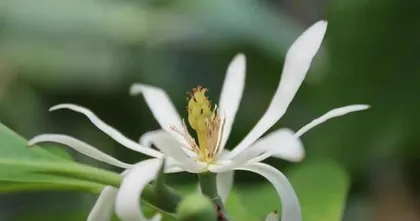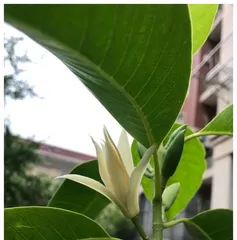Magnolia is an elegant plant, not only with snow-white leaves but also with fragrant and charming flowers, making it an excellent choice for indoor potted plants. However, to make your magnolia bloom more and for a longer time, some scientific care techniques are needed. Let me introduce them to you in detail.

1. Choosing a Magnolia
When choosing a magnolia, select a plant with a straight stem, full leaves, and no pests or diseases. Also, look at the number and maturity of the flower buds, choosing a variety with many buds and moderate maturity.

2. Basic Care Techniques
Magnolia prefers a warm, humid, and well-ventilated environment. During the care process, pay attention to timely watering, maintaining ventilation, and controlling temperature. At the same time, regularly change the soil, prune branches and leaves to keep the plant healthy.
3. Controlling Light Exposure

Magnolia has certain requirements for light exposure, needing 8 to 12 hours of light per day. To control the light duration, you can use methods such as light-shading curtains or moving the flower pot.
4. Controlling Temperature
The temperature requirements for magnolia are relatively flexible, with the optimal range being between 18°C and 28°C. Temperatures that are too high or too low will affect the growth, development, and flowering of magnolia.
5. Fertilization Techniques
Magnolia is an acid-loving plant, preferring acidic soil and iron-containing fertilizers. When fertilizing, choose acidic fertilizers and pay attention to controlling the concentration and frequency of application.
6. Regular Repotting
Regular repotting is a necessary condition for keeping magnolia healthy. It is generally recommended to change the pot soil once every spring or autumn, and to promptly remove any dead or diseased parts of the roots.
7. Misting Techniques
Misting is an important part of magnolia care. When misting, use softened water and pay attention to the force and direction of the spray to avoid damaging the plant.
8. Proper Pruning
Proper pruning is key to making magnolia beautiful and abundant in flowers. It is generally recommended to prune during the vigorous growth period, cutting off unnecessary branches, leaves, and flower buds, while also controlling the number and size of the flowers.
9. Pest and Disease Prevention
Preventing pests and diseases is an important aspect of magnolia care. It is generally recommended to inspect the plant regularly to detect and deal with pest and disease problems in a timely manner to prevent their spread and impact on health.
10. Mastering Watering Techniques
Watering is an important part of magnolia care. It is generally recommended to use deep irrigation methods, controlling the amount of water and frequency of watering to avoid overwatering and causing root rot.
11. Avoiding Strong Light
Magnolia is sensitive to strong light, which can easily cause yellowing of leaves and wilting of flowers. When choosing a planting location, avoid direct sunlight and use shading nets for protection.
12. Providing Appropriate Humidity
Magnolia likes a humid environment, but it should not be overly moist. During the care process, provide appropriate humidity, which can be adjusted by misting or using a humidifier.
13. Choosing the Right Pot
The choice of pot for magnolia is also very important. It is generally recommended to choose a pot with good air permeability and drainage performance, and to appropriately increase the height of the pot to facilitate the growth and development of the plant.
14. Controlling Fertilizer Concentration
Both excessively high and low fertilizer concentrations can adversely affect magnolia. When fertilizing, pay attention to controlling the concentration and frequency of application to avoid over-fertilization.
15.
Magnolia is an elegant and beautiful plant, but to make it bloom more and for a longer time, scientific care techniques are needed. During the care process, pay attention to controlling factors such as temperature, light duration, and watering amount. At the same time, regular operations like repotting, misting, and pruning are also very important. Only by mastering these care techniques can you create a magnolia potted plant with a long flowering period and rich colors.